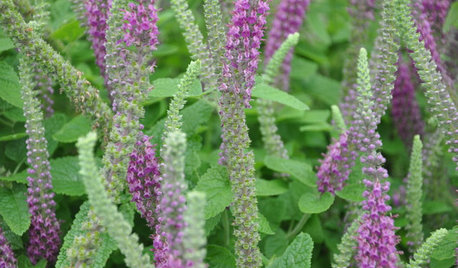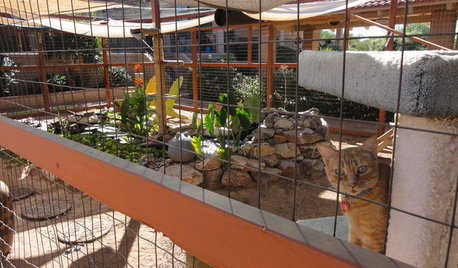confused on oregano
yardart
18 years ago
Related Stories

FEEL-GOOD HOME9 Smells You Actually Want in Your Home
Boost memory, enhance sleep, lower anxiety ... these scents do way more than just smell good
Full Story
FALL GARDENING20 Favorite Flowers for the Fall Landscape
Vivid blooms and striking shapes make these annuals and perennials a delight in autumn gardens
Full Story
EARTH DAYHow to Design a Garden for Native Bees
Create a garden that not only looks beautiful but also nurtures native bees — and helps other wildlife in the process
Full Story
HOUSEPLANTSHow to Add a Living Wall
Learn how to choose systems and plants, and what it will cost to bring a bit of the outdoors in or green up a garden wall
Full Story
GARDENING GUIDESGreat Garden Combo: 3 Wonderful Plants for a Deer-Resistant Screen
Protect your privacy and keep deer at bay with a planting trio that turns a problem garden area into a highlight
Full Story
CONTAINER GARDENS7 Deer-Resistant Flowers for Your Summer Containers
Grow these as protection for edibles or just for their colorful beauty — deer might not like them, but everyone else will
Full Story
MOST POPULAR11 Nominees for the ‘She Shed’ Hall of Fame
These special sanctuaries let busy women get away from it all without leaving the backyard
Full Story
PETSSee a Deluxe 'Catio' Built for Feline Fun
Sixteen lucky cats get the run of a protected outdoor patio with ramps, steps and even a koi pond
Full Story
LANDSCAPE DESIGN5 Reasons to Consider a Landscape Design-Build Firm for Your Project
Hiring one company to do both design and construction can simplify the process. Here are pros and cons for deciding if it's right for you
Full Story










andy_sa
yardartOriginal Author
Related Professionals
Danbury Landscape Architects & Landscape Designers · Comstock Park Landscape Architects & Landscape Designers · Camas Landscape Architects & Landscape Designers · Milwaukee Landscape Architects & Landscape Designers · Beachwood Landscape Contractors · Bell Gardens Landscape Contractors · Edwardsville Landscape Contractors · Gaithersburg Landscape Contractors · Old Saybrook Landscape Contractors · Quincy Landscape Contractors · Watertown Landscape Contractors · Merrifield Landscape Contractors · Austin Roofing & Gutters · Blue Island Roofing & Gutters · Cave Spring Roofing & Gutterskris
Daisyduckworth
CA Kate z9
Daisyduckworth
yardartOriginal Author
garnetmoth
andy_sa
yardartOriginal Author
narcnh